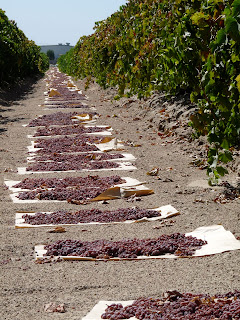MEETING ON SEPTEMBER 10TH IN SACRAMENTO
CDFA and Calif. Water Commission
To Meet for Urgent Water Reliability
The California State Board of Food and Agriculture and the California Water Commission will hold a joint meeting concerning the state’s water supply on September 10th in Sacramento. The meeting will be held from 10 a.m. to 3 p.m. at the California Department of Food and Agriculture, 1220 ‘N’ Street – Main Auditorium, Sacramento, CA 95814.
“California’s current water situation spells uncertainty for agricultural interests throughout this state,” said CDFA Secretary Karen Ross. “We need to work proactively with farmers and ranchers to address groundwater overdraft and water transfers – providing a level of reliability over the next few years.”
On May 20th, Governor Edmund G. Brown, Jr. issued an Executive Order to streamline approvals for water transfers to protect California’s farms. The order was in response to the very dry conditions occurring within the state. Currently, water allocations for this year remain low with 35 percent of requested amounts through the State Water Project and 20 percent of requested amounts through the federal Central Valley Project. Even if this winter provides a normal wet year, growers throughout the state are preparing for a reduced water supply as nine of the State’s major reservoirs are below historic average levels, and six of these are below 50 percent total capacity. This meeting provides a forum for agricultural stakeholders, water representatives, and government officials to discuss California’s water situation and make recommendations to the state board.
Invited speakers include: Director Mark Cowin, California Department of Water Resources, Randy Record, Chair of the Association of California Water Agencies (ACWA); Mike Wade, California Farm Water Coalition; Chris White, Central California Irrigation District; Victoria Whitney, State Water Resources Control Board; Karla Nemeth; California Natural Resources Agency; Marvin Meyers, Meyers Farming; Joe MacIlvaine, Paramount Farming; John Sweigard, Merced Irrigation District and Kris Beal, Vineyard Team.
 |
| Craig McNamara, President of the California State Board of Food and Agriculture. |
“With the strong potential for drought conditions next year – flexibility within the statewide water system is needed” said Craig McNamara, president of the California State Board of Food and Agriculture. “I’m hopeful that this meeting can help inform policy discussions and encourage action by state and federal agencies.”
The California State Board of Food and Agriculture advises the governor and the CDFA secretary on agricultural issues and consumer needs. The state board conducts forums that bring together local, state and federal government officials, agricultural representative and citizens to discuss current issues of concern to California agriculture.
The California Water Commission consists of nine members appointed by the Governor and subject to Senate confirmation. Its historical role includes advising the Director of the Department of Water Resources on matters within the Department’s jurisdiction, approving rules and regulations, and monitoring and reporting on the construction of the State Water Project.














